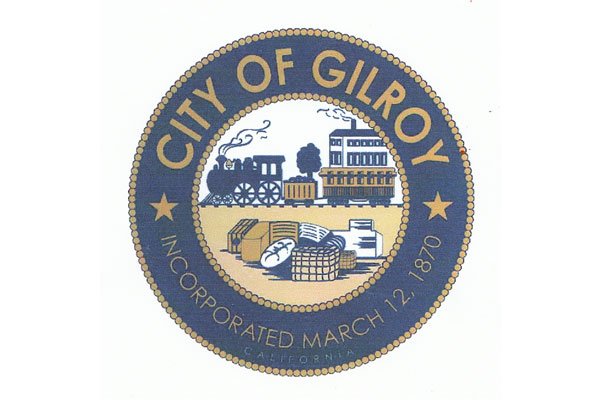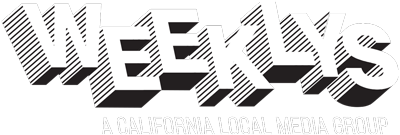City will update water/sewer monitoring system to reign in
businesses that owe $20 million in unpaid fees
Saint Louise Regional Hospital could soon get a bill for more than $1 million because it is one of 121 businesses that has overused Gilroy’s water and sewer systems. All told, these thirsty tenants owe the city nearly $20 million in unpaid fees.
If left uncollected, the city will be hard pressed to maintain its 80-mile network of underground pipes, some of which date back to the early 1900s. But City Engineer Rick Smelser cautioned that the city’s Community Development Department will begin collecting the non-urgent money once the city council clarifies the “overuse penalties” in Gilroy’s 22-year-old sewer and water ordinances. The department is working on new ordinances that should be ready for council approval at its Feb. 25 meeting, Smelser said.
“We haven’t lost any money. We can collect the money anytime. There just isn’t a system to notify businesses to either reduce their usage or to pay up,” Smelser said. “I don’t know what the 1986 council was thinking.”
The two ordinances determine how much a commercial or industrial user should pay to offset their expected impact on the city’s water and sewer systems. A business and city agree on the one-time “impact fee” and then the business pays its separate, much-lower water and sewer bills each month based on actual usage. The fee money is restricted to sewer- and water-related projects and cannot finance whatever the city wants.
Gilroy has 242 allocation agreements with as many businesses, but 121 of those have not stayed within their aquatic means, according to Smelser, either by drawing too much water, flushing too many toilets or both. Smelser provided the council with a lengthy list of accounts with allocation agreements and how much each one still owes in fees, but it did not include the business name with the amount due. In an e-mail Thursday, Smelser wrote that he expected a final list in a month or two as staff continues to match company names with account numbers.
The Dispatch did, however, obtain a copy of the list of 121 companies dated November 2007. Five businesses alone owe more than $1 million each for excessive sewer use, and there are dozens of six-figure violators, as well, but multiple businesses did not return repeated messages for comment by deadline Thursday. The city owes itself $181,171 because Gilroy Gardens, which signed its allocation agreement in 1991, flushes 141,880 gallons more than it should each month, and as of last month, the city now owns the park.
This has all led to the $20 million problem, but the city also took about five years to firmly establish its impact fee rates after the 1986 ordinances went through, Smelser said, meaning those first good-faith allocation agreements relied on tenuous rates until the early ’90s. Pre-1985 businesses that have not drawn any new permits since have never paid impact fees because their usages are grandfathered in, according to Smelser, who added that the city will continue trying to create or update allocation agreements for those steady, older users, which total more than 600.
Aside from re-wording the two ordinances to clarify that “consistently over” means 90 days of drawing more than one’s lot, Smelser said the development department will also hire a part-time employee by summer. This person will help collect outstanding fees and work with businesses to reduce their overages, which will be easier once the development department has monthly, automated reports to monitor usage, Smelser said.
“We don’t want to handicap businesses. We need to implement a full-blown, city-wide program once the ordinances are up to date,” said Smelser, adding that it should take about three months after the new computer system kicks in for the city to identify serious red flags that require re-negotiation and/or discipline.
Without a sophisticated computer monitoring system, the city has been forced to triage egregious over-drawers. It has then worked with the top 20 or 30 to successfully charge them more and/or to reduce their flow through recycling, Smelser said. With a better monitoring system, however, Smelser said the $20 million figure will drop because his staff will have timely information and be in a better position to convince businesses to scale back their usages and/or pay backed fees. Smelser said he expects the city will collect about $5 million by early 2011.
The city council heard all of this at its semi-annual policy summit late last month. Councilman Perry Woodward agreed with Smelser and said the money could be collected at any time, and Mayor Al Pinheiro led the rest of the concerned body in deciding to hold a study session on the issue in the near future.
Despite all the over-usage, Smelser said the sewer plant, which Gilroy shares with Morgan Hill, is doing just fine processing about 6 million gallons of sewage per day. The city will not expand the plant prematurely due to the excess sewage, he added, and it still plans to spend $85 million to add 5 million gallons to its capacity in 2010.
Top 10 sewer over-users
$1.83 M – Marriot Laundry
$1.47 M – Ochoa Center
$1.23 M – Fiber Innovations
$1.07 M – Outlets (Nike side)
$1.02 M – Saint Louise Hospital
$581,910 – Costco
$464,266 – Cintas
$388,404 – Home Depot
$387,778 – Medical Offices
$385,480 – In & Out Burger
$346,686 – Goldsmith
Top 10 water over-users
$386,427 – Marriot Laundry
$255,204 – Outlets (Nike side)
$111,453 – Costco
$87,719 – In & Out Burger
$78,073 – Saint Louise Hospital
$70,804 – Hilton Garden Inn
$65,096 – Fiber Innovations
$53,572 – Giacalone Construction
$53,070 – Gilroy Chevrolet
$52,013 – Gilroy Motors (GMC)
Out of 242 allocation agreements…
60 businesses exceed water allocation
$2.1 million in unpaid water fees ranging from $485 to $400,000 per business
119 businesses exceed sewer allocation
$17.4 million in unpaid fees ranging from $225 to $1.8 million per business
Commercial/Industrial sewer impact fees
$3,966 / 100 gallons per day
Commercial/Industrial water impact fees
$8,208 / 1,000 gallons per day
Source: City of Gilroy, Engineering















